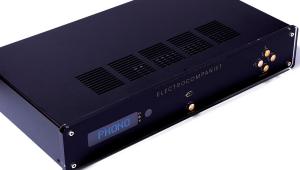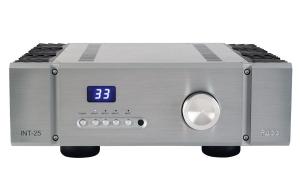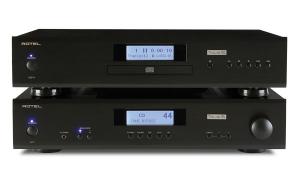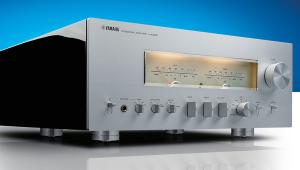Belles Aria

 American brand, Belles (Power Modules Inc.) is not one we come across often in these pages despite it being around for some 36 years – in fact the last time we saw anything from it was back in issue 325. David Belles has been behind a host of sensibly priced, high-quality amplifiers since 1978, both under the Belles brand and as a talented hired gun for other leading hi-fi companies. His prowess with electronics even played a part in the space race at mission control a little while ago, so he knows all about important signals getting through correctly. Previous amps have included refined preamplifiers and highly regarded and powerful Class A power amps that could double up as Chevy engine blocks. So the creation of this brand new, smaller and more affordable integrated is highly anticipated.
American brand, Belles (Power Modules Inc.) is not one we come across often in these pages despite it being around for some 36 years – in fact the last time we saw anything from it was back in issue 325. David Belles has been behind a host of sensibly priced, high-quality amplifiers since 1978, both under the Belles brand and as a talented hired gun for other leading hi-fi companies. His prowess with electronics even played a part in the space race at mission control a little while ago, so he knows all about important signals getting through correctly. Previous amps have included refined preamplifiers and highly regarded and powerful Class A power amps that could double up as Chevy engine blocks. So the creation of this brand new, smaller and more affordable integrated is highly anticipated.
Unboxing the new Aria reveals a rather understated amplifier that at first glance could appear a little plain, but I already sense this is an amp that is all about substance over style. Build is very robust with a purposeful, folded aluminium case protecting internals and securely hosting rear connections. A more substantial aluminium fascia is home to the
soft touch power button, motorised volume control, mute button, remote sensor and headphone jack. The fascia also houses a button to operate a ‘monitor circuit’, historically popular for recording purposes or feeding equalisers. I suspect many owners are unlikely to use this feature, but it does seem to underline an old-school approach to doing things properly. There is no display to show volume level and small LEDs are the only indication of source input or muting, but the inclusion of a simple remote control means that everything can be operated easily enough at a distance. The plastic handset seems slightly out of kilter with the amplifier’s price tag, but this isn’t uncommon.
Connections around the back include a dedicated moving-magnet phono input with earthing post, three regular line-level inputs as well as a monitor in, monitor out and bypass connections, plus a ‘preamplifier out’ for use with external power amplifiers. All input connections are via substantial, quality RCAs and speaker connection is via sturdy binding posts that will accept spades, wire or banana plugs.
A purely analogue integrated amp is a rare breed these days. Many manufacturers now see an integrated as needing to be a veritable Swiss army knife of hi-fi connectivity convenience, commonly able to accept a host of digital sources including everything from USB to optical and coaxial digital inputs. But I congratulate Belles for setting its stall out for those that want a purely analogue solution. Technically speaking this can make for a far quieter electronic environment, which can be especially important with sensitive phono signals. Analogue-only customers might well be heartened by this purist approach and those that already own dedicated DACs will be pleased that budget hasn’t been spent needlessly.
I connect the Belles Aria to my reference Shanling CD-T100 HDCD player via Black Rhodium Sonata VS-1 interconnects (HFC 398) and a Townshend Rock turntable to the phono input, and initially use Cadence Arca hybrid electrostatic speakers for listening duties. Powering the Aria triggers a number of internal relay switches and the amp automatically starts off muted for extra safety. Nice touch.
Sound quality
Playing Ben Harper’s Gold To Me on vinyl is a sumptuous start. The bass line is deeply satisfying, potent and very weighty. Some amps do fast bass, but lack punch. Some do deep bass, while lacking control. Some do fast, controlled and punchy bass, but can’t groove. Here, the Aria is a master of all bass qualities and my feet are tapping even before it’s fully warmed through. Hand chimes ring high and sweet across a wide soundstage. Treble is especially sweet for a solid-state design, having an almost valve-like smoothness and lack of grain. Some competitors at this price point can dredge up slightly more forensic detail, creating a more finely etched soundstage, but this can sometimes flatten the performance and hinder this level of musicality and depth. Harper’s voice has a rich, rounded and believable quality and his vocals are superbly layered in front of the other instruments, giving a substantial 3D quality. The Aria doesn’t do warts and all detail in the name of hi-fi – it does musical coherence in the name of music.
Spinning the Moderato movement from Rachmaninov’s Piano Concerto In C Minor on CD shows the Aria is beautifully suited to classical dynamics and portraying the timbre of a solo performer against the backdrop of a rich orchestra. Out of curiosity, I swap in some recently refurbished Rega R5 speakers to present a slightly different load, and already good qualities just get better. Bass notes are supple yet more defined, the soundstage deepens and the already strong musicality goes up a gear. The piano is a notoriously difficult instrument for hi-fi to portray, and doubly so when playing with an orchestra. Yet the quality of the Aria’s highly communicative midband and bass does a superb job of conveying the solidity and presence of the instrument and its relationship to similar tones from other instruments.
This is an amp that isn’t shy of work and positively relishes speakers that might enjoy extra current and a little more oomph to perform. The force of the piano hammers striking in the most dynamic sections is rousing and distinct from the rising power of the orchestra. As before, the Aria may not be the last word in clinical micro detail, but no important musical information is missing and the presentation is highly cohesive, three dimensional and lyrical.
Playing Papa Was A Rollin’ Stone by The Temptations on CD seems the perfect track to summarise the Aria’s qualities. The opening bass line is especially fat and the lazy high-hats shimmer without ever sounding splashy. The wah-wah guitar positively drips with seventies ‘chocha chocka’ and lush, transparent strings effortlessly rise and float between the speakers. Sonorous horns have a clear but ethereal quality and a cascading reverb that seems infinite, while in contrast the bass drum punches my solar plexus like I’m being resuscitated. Handclaps have real snap yet voices are rich, deep and emotive. Vocals feel intimate and especially convincing, pressing forward and out from the plane of the speakers. But each of these superb performances isn’t separate. They are beautifully woven together, seamlessly communicating this infectious track. The Temptations had talent, and so too does this amp. Plenty of amps will play this track well, but few will capture the musical essence of the song as well as I’m hearing it now. The Aria has soul. If you love music, you’ll love it.
Conclusion
The highly focused design of this analogue-only amp is its strength, but potentially also a factor that may limit its widest appeal. By side-stepping digital inputs, Belles has excelled at analogue amplification, but those with digital sources or anyone thinking of sampling a streaming service or dabbling with hi-res downloads may unfortunately reject this fine machine out of hand. Belles has clearly decided to spend the budget on the things that an analogue fan will hear as sound quality, favouring high-grade components and a short, elegant signal path over sexy screens, a flashy remote or svelte bodywork. If you are buying an amp for its display or casework then I suspect David Belles would probably prefer that you look elsewhere.
The inclusion of a fine moving-magnet phono stage here creates a beautifully coherent, analogue integrated amp that might well shame many separate phono stages. However, it is quite possible that at this sort of budget a vinyl lover may well have migrated from MM to MC cartridges, for their superior refinement. This means you’ll have to invest in a step-up transformer or potentially purchase a standalone MC phono stage. Real estate is precious inside this amp, but if I were greedy, I’d love Belles to include a dedicated MC input alongside the MM phono input, or a switchable input. This would create a truly comprehensive analogue integrated amp.
Most importantly, sound quality is luscious and sweet and the claimed 75W per channel power output has rarely sounded more involving and muscular. This isn’t an amp that demands to be listened to (as some can). It simply invites you to listen and a few hours later you realise a whole afternoon has sailed by. If you love the smooth, liquid delivery of tube amps but wish they had more grunt, listen to the Aria. CW
DETAILS
Product: Belles Aria
Origin: USA
Type: Integrated amplifier
Weight: 12kg
Dimensions: (WxHxD) 420 x 79 x 356mm
FEATURES
● Quoted power output: 2x 75W (8ohm)
● Inputs: 3x line-level; 1 MM phono
● Outputs: preamp; headphone
Distributor: NuNu Distribution
Telephone: 0203 5442338
Website: nunudistribution.co.uk
 Full review appeared in HFC 412
Full review appeared in HFC 412
 |
Inside this month's issue:
Q Acoustics 3020c standmount loudspeakers, Perlisten R10s active subwoofer, Quad 33 and 303 pre/power amps, Acoustic Solid Vintage Full Exclusive turntable, newcomer Fell Audio Fell Amp and Fell Disc and lots, lots more...
|




















































